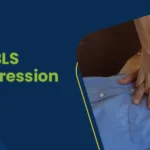Table of content(s)
- Introduction
- Why is it crucial to learn PALS acronyms?
- PALS acronyms you need to know
- How to study PALS acronyms?
- Conclusion
What does PALS stand for? Pediatric advanced life support comprises several acronyms, which can be confusing when you are just getting started. However, they are essential to offering high-level care. Are you an expert professional or just starting your healthcare journey? PALS acronyms can increase your confidence and skills. The acronyms are useful, especially while reciting the story of a life-saving action.
According to a study report, healthcare providers who are comfortable with PALS terms are more effective in pediatric emergencies. It is crucial to know the acronyms to bring about a significant change during an emergency.
This guide here will help you understand the acronyms. This will also serve as the go-to resource for revising the terms, which could help save a life. With some extra knowledge, you will be more prepared to act and be confident.
Master PALS Now
Get PALS certified with confidence
Why is it crucial to learn PALS acronyms?
Pediatric advanced life support acronyms are crucial for healthcare professionals. If you learn the acronyms well, responders can act swiftly. This will ensure that no time is wasted.
Here are reasons why you must learn acronyms:
Enhances rapid decision-making: PALS medical abbreviation helps simplify medical terms that you can easily remember. Every second matters, and knowing the acronyms helps recall the steps to stabilize the patient. This reduces the time spent thinking and allows for immediate treatment.
Improved communication: PALS acronyms help healthcare professionals communicate in the community efficiently. Teams need to coordinate and give help. Acronyms ensure that everyone is on the same page. This reduces misunderstandings. This creates a smoother response during emergencies.
Boosts confidence: When you are familiar with PALS acronyms, it makes you confident. Further, it makes you calm. Acronyms can prepare you well and boost your confidence. This leads to better decision-making.
Supports compliance with best practices: PALS acronyms help maintain high standards. These acronyms ensure that healthcare providers follow recommendations. When you stay aligned with these guidelines, it reduces errors.
Read More: Pals coupon code
PALS acronyms you need to know
Here are the PALS medical abbreviation you need to know:
ABCD | Airway, breathing, circulation, differential diagnosis
ABCDE | Airway, breathing, circulation, disability, exposure
ACLS | Advanced Cardiac Life Support
AED | Automated external defibrillator
AHA | American Heart Association
ALS| Advanced life support
AV | Atrioventricular
AVPU | Alert, verbal, pain, unresponsive
BLS | Basic Life Support
BP | Blood pressure
BPM | Beats per minute
CAB | Circulation, airway, breathing
CHF| Congestive heart failure
CPR | Cardiopulmonary resuscitation
CT | Computed tomography
ECG | Electrocardiogram
ECPR | Extracorporeal CPR
ED | Emergency Department
EMS | Emergency medical services
EMT | Emergency medical technician
ET | Endotracheal
FDA | Food and Drug Administration
GCS | Glasgow Coma Scale
GI | Gastrointestinal
ICU | Intensive care unit
IHCA | In-hospital cardiac arrest
IN | Intranasal
IM | Intramuscular
IO | Intraosseous
IV | Intravenous
LMA | Laryngeal Mask Airway
LV | Left ventricle
mA | Millaperes
MAP | Mean arterial pressure
MI | Myocardial infarction
NIH | National Institutes of Health
NPA | Nasopharyngeal airway
OHCA | Out-of-hospital cardiac arrest
OPA | Oropharyngeal airway
PAD | Public Access Defibrillation
PALS | Pediatric Advanced Life Support
PE | Pulmonary embolism
PEA | Pulseless electrical activity
PETCO2 | Partial pressure of end-tidal carbon dioxide
PSVT | Paroxysmal supraventricular tachycardia
PVCs | Premature ventricular contractions
pVT | Pulseless ventricular tachycardia
ROSC | Return of spontaneous circulation
RRT | Rapid response team
RV | Right ventricle
SBP | Systolic blood pressure
SPAM | Signs/symptoms, past medical history, allergies, medications
SVT | Supraventricular tachycardia
TCP | Transcutaneous pacing
TTM | Targeted temperature management
VF / V-Fib | Ventricular fibrillation
VT | Ventricular tachycardia
Get PALS Certified in Minutes
Receive your PALS Certification today!
How to study PALS acronyms?
Studying for your PALS certification exam is similar to studying for any examination. It can be quite demanding. However, if you have the right strategies in mind, it will not be overwhelming.
Here are a few essential tips to follow:
- Take it slow: Do not overdo it. Try not cramming everything at once. This will give you a hard time remembering them. So take things slow and steady to remember the acronyms in the long run.
- Write down/draw the algorithms: This process has been shown to help some people memorize materials better. So try writing it down and give it a shot.
- Take regular breaks while studying: As mentioned earlier, do not cram information. Instead, take regular breaks at various intervals to keep your mind fresh. This will help you memorize better and improve the results of your study.
- Change the location: When you feel like you cannot understand the material anymore, you must change the location. A different atmosphere helps clear your head and refocus your efforts once again. So feel free to head out to a library or coffee shop.
- Study in groups: Study with others to comprehend the material efficiently. Get together with colleagues working in the same profession to memorize better. Help each other out, and in no time you will memorize everything.
- Take practice tests: Make the most of the tools and resources available to you. These tests are designed to mimic the original tests. Moreover, taking them can help you prepare better for the actual exams.
- Teach others what you have learned: When you repeat your learning, you learn better. It can give you the necessary confidence to pass the test easily.
Read more: Post-cardiac arrest care (ACLS)
Conclusion
Everyone learns differently. So if you are not aware of how best you can learn, experiment using different study strategies. Figure out what best works for you. Keep the PALS acronyms handy to refer to while you are working in your field.







